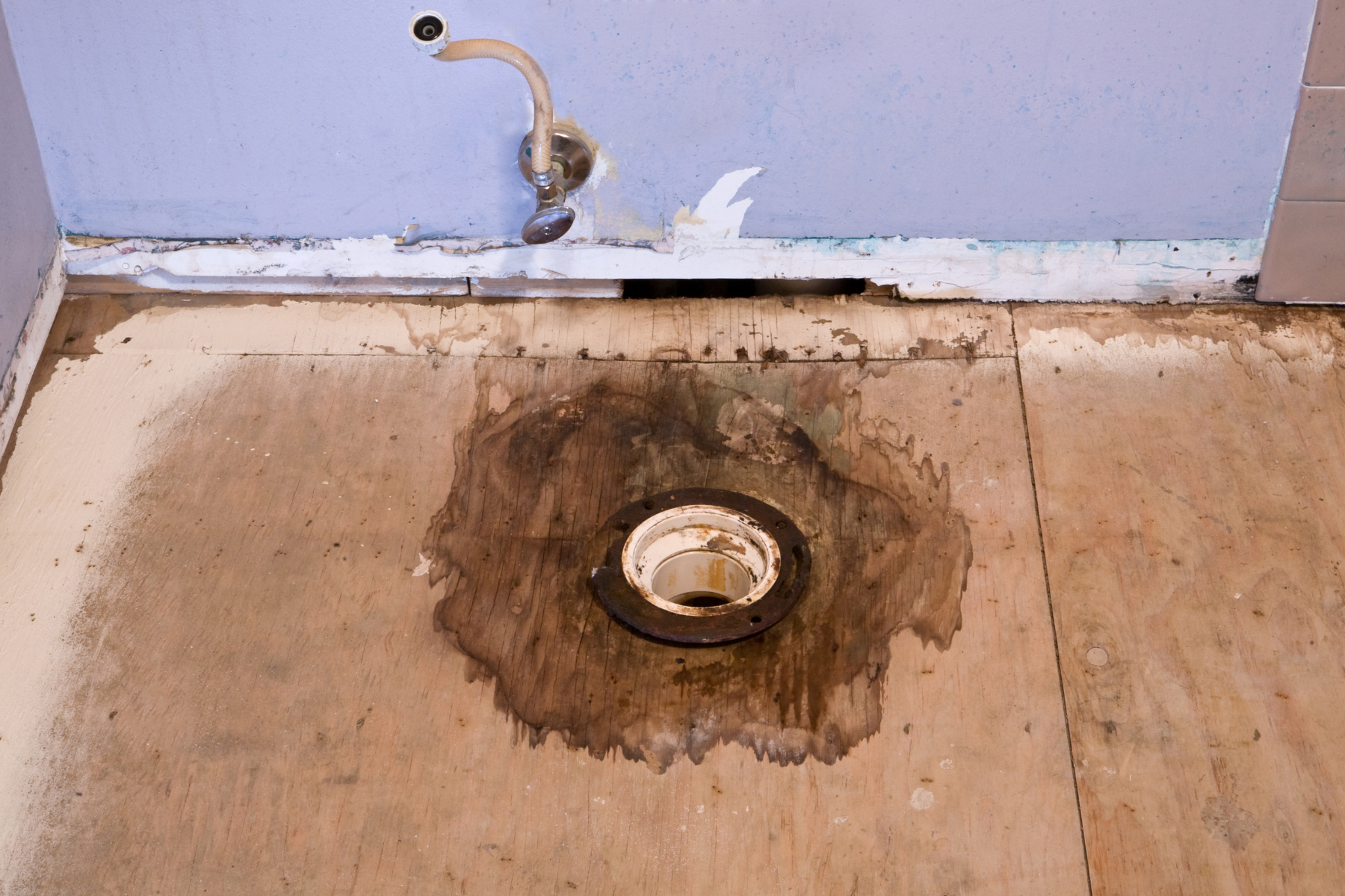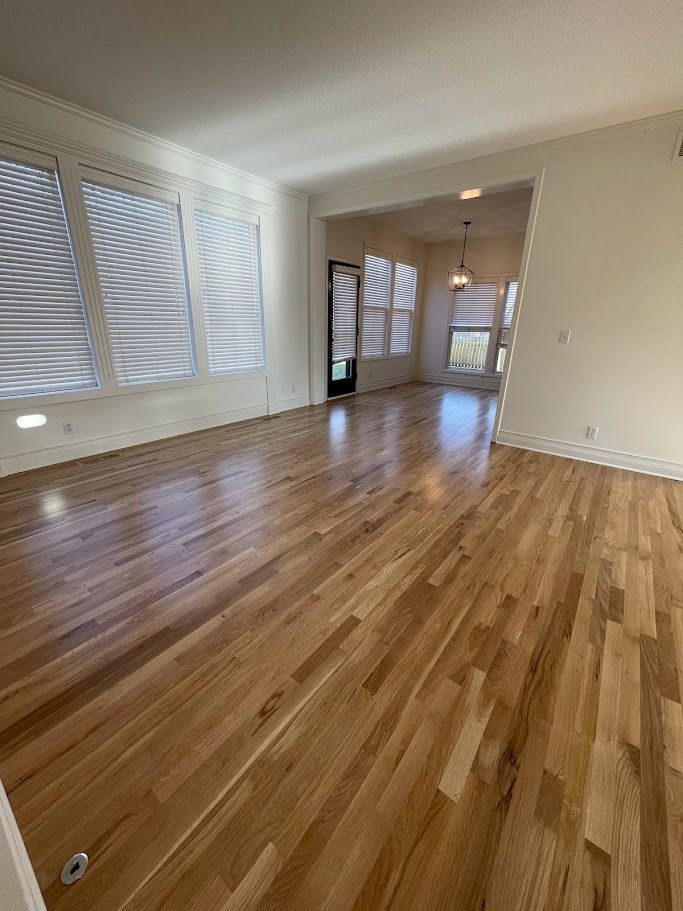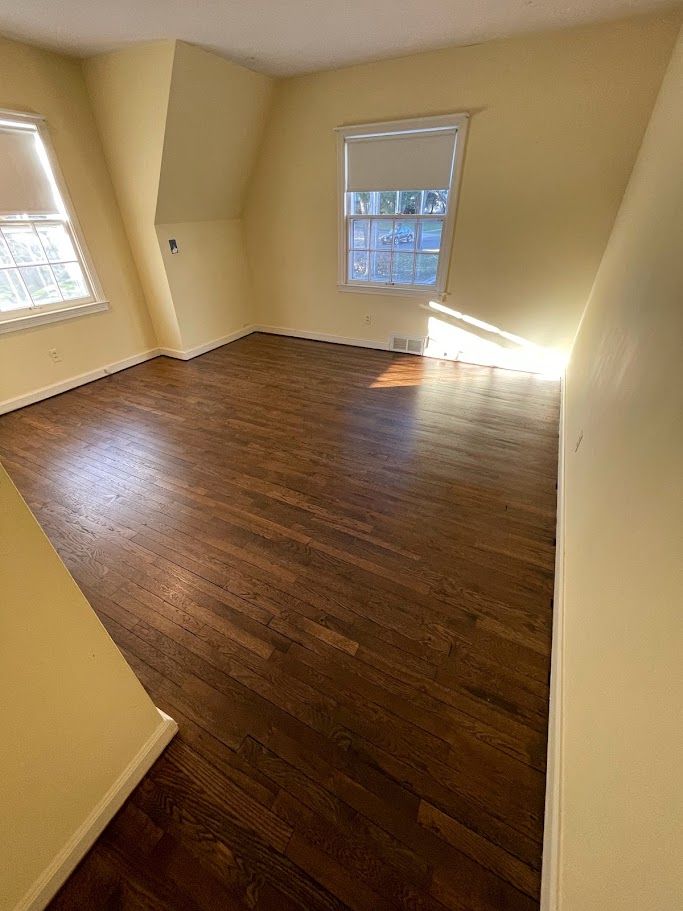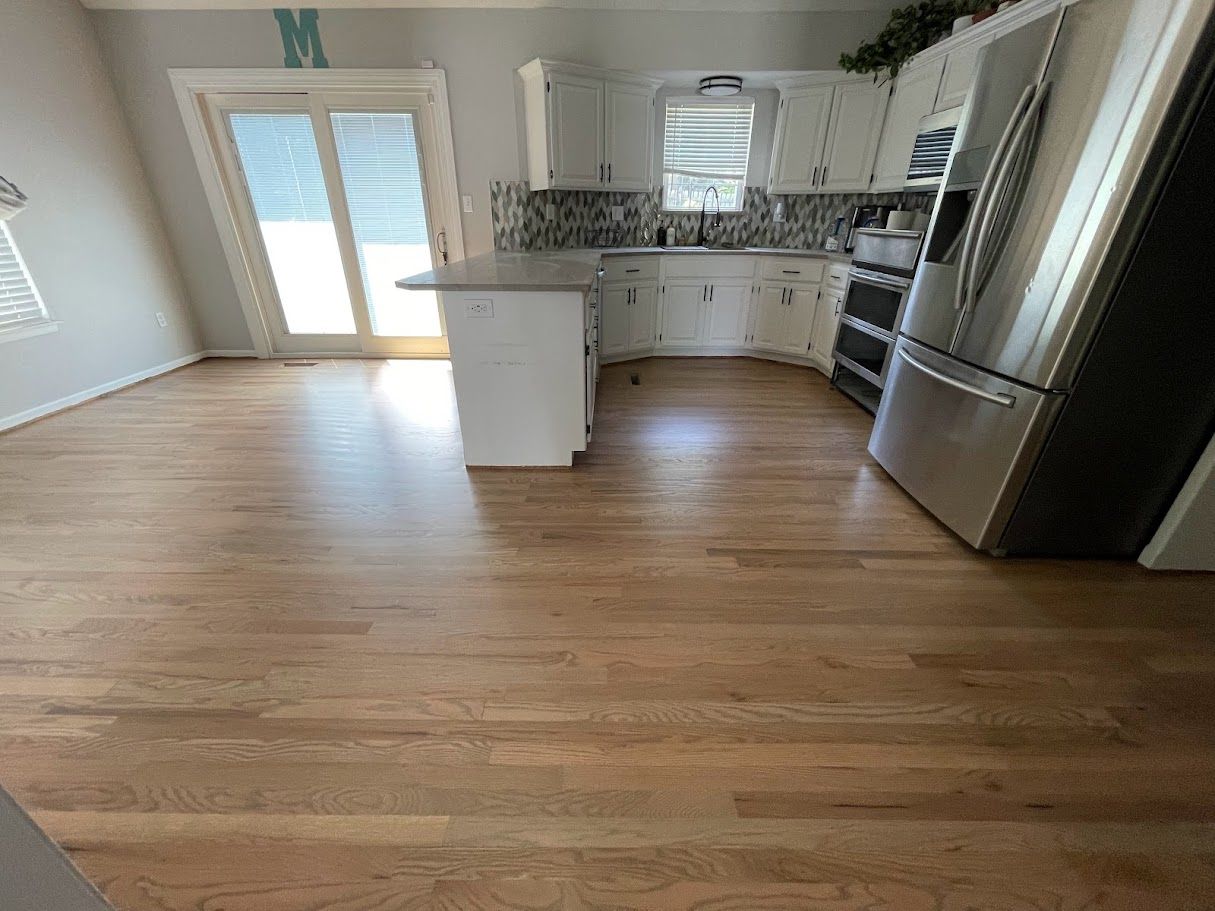Water Damage Repair For Hardwood Floors
Restoring Your Hardwood Floors with Precision
Water damage to hardwood floors is one of the most frustrating and stressful situations a homeowner can face. Whether it’s from a burst pipe, leaking appliance, or heavy rainfall, even a small amount of water can lead to costly damage if not addressed quickly and correctly. At Precision Hardwood Floors, we specialize in helping homeowners in Leawood, KS and the surrounding areas restore their floors to like-new condition—safely, efficiently, and with unmatched craftsmanship.
With decades of experience under our belt, we know how to identify and repair water-damaged flooring while helping you prevent future issues. Here's everything you need to know about spotting, minimizing, and addressing water damage to your hardwood floors.

Discolored, Cupped, or Buckled Floors?
How to Spot Water Damage on Hardwood Floors
Here are some of the most common signs your hardwood floors may be suffering from water intrusion:
- Cupping: Boards appear concave, with edges higher than the center.
- Crowning: The opposite of cupping—boards bulge in the center and dip on the sides.
- Discoloration: Stains, dark spots, or fading are often early indicators.
- Buckling: Extreme lifting or separation from the subfloor.
- Mold or Musty Smells: Odors often mean moisture has been trapped under the floor.
- Soft or Spongy Boards: These can indicate rot or long-term saturation.
If you notice any of these symptoms, it's important to act fast. Water damage doesn’t get better with time—it gets worse.
What to Do Immediately After Water Exposure
The first 24-48 hours are critical
At Precision Hardwood Floors, we offer quick-response evaluations and recommendations to help you make informed decisions quickly. Here are steps you can take to minimize damage before a professional arrives:
If possible, shut off the water supply or fix the leak right away to prevent more water from entering the area. The sooner you stop the flow, the less damage your floorboards will face.
Use towels, a wet/dry vacuum, or mops to remove standing water from the surface of your floors. Quick removal can reduce the risk of moisture soaking deep into the wood and subfloor.
Increase airflow by placing fans around the affected space and running a dehumidifier to pull moisture from the air. Avoid using direct heat like space heaters, as this can cause boards to warp further or crack.
Even if your floors appear dry on the surface, moisture may still be trapped underneath or between the boards. At Precision Hardwood Floors, we have the tools and experience to assess the damage and guide you on the best next steps.
Repairing vs. Replacing Water-Damaged Boards
Our Process
Our goal is always to preserve as much of your existing floor as possible while ensuring your home is safe and beautiful. Every water damage situation is unique, but here's how we typically approach the restoration process:
- Moisture Testing: We use advanced tools to determine moisture levels in the flooring and subfloor.
- Floor Assessment: We'll evaluate whether the floor can be dried and refinished or if sections need to be replaced.
- Sanding & Refinishing: For minor damage, sanding and sealing may fully restore your floor’s appearance and integrity.
- Board Replacement vs. Full Replacement: Severely damaged boards may be removed and replaced with a precise match in wood species, color, and grain. In cases of significant or prolonged exposure, a full replacement may be the most effective and long-term solution.


Restoration After Water Damage – We Can Help
Understanding Insurance Coverage
Dealing with insurance after water damage can be confusing. The good news is, many water damage repairs are covered by homeowners insurance—especially if the cause was sudden and accidental, like a pipe burst or washing machine leak.
We regularly work with insurance companies and can provide detailed damage assessments, photos, and documentation to support your claim. We’re happy to walk you through the process and make sure you get the coverage you deserve.
Have questions regarding your insurance? Give us a call and we'll answer all your questions!
-
Can hardwood floors be saved after water damage?
Yes, in many cases, hardwood floors can be saved—especially if the water exposure is caught early. Cupping and minor warping can often be reversed with proper drying and refinishing. However, if the wood has buckled or the subfloor is compromised, replacement may be necessary. We evaluate every situation thoroughly to recommend the most cost-effective and long-lasting solution.
-
How long does it take for hardwood floors to dry out after water damage?
Drying time depends on the extent of the damage and how much moisture has penetrated the wood and subfloor. With professional drying equipment, most floors can dry in 3–7 days. However, moisture testing is essential to confirm dryness before sanding, refinishing, or replacing any boards. Rushing this process can lead to future issues.
-
Will insurance pay to repair or replace my hardwood floors?
In many cases, yes. If the water damage was sudden and accidental—like from a burst pipe or appliance leak—your homeowners insurance will likely cover the repair or replacement costs. Damage from long-term neglect or flooding, however, may not be covered. We work closely with insurance providers and can help you document the damage properly for your claim.
-
What’s the difference between cupping and crowning, and what causes it?
Cupping happens when the edges of a board rise higher than the center, usually due to moisture absorbed from below. Crowning is the opposite—the center of the board swells higher than the edges, often due to moisture from above or sanding too soon after cupping. Both are signs of water damage and should be evaluated by a professional.
Let’s Bring Your Floors Back To life—Beautifully and Professionally
Call Precision Hardwood Floors Today
If your hardwood floors have been affected by water, don’t wait—early intervention is key. At Precision Hardwood Floors, we bring experience, attention to detail, and a passion for craftsmanship to every job. We’ve helped countless homeowners restore their wood floors after water damage—and we can help you too!
Water Damage Repair For Hardwood Floors
Restoring Your Hardwood Floors with Precision
Water damage to hardwood floors is one of the most frustrating and stressful situations a homeowner can face. Whether it’s from a burst pipe, leaking appliance, or heavy rainfall, even a small amount of water can lead to costly damage if not addressed quickly and correctly. At Precision Hardwood Floors, we specialize in helping homeowners in Leawood, KS and the surrounding areas restore their floors to like-new condition—safely, efficiently, and with unmatched craftsmanship.
With decades of experience under our belt, we know how to identify and repair water-damaged flooring while helping you prevent future issues. Here's everything you need to know about spotting, minimizing, and addressing water damage to your hardwood floors.

Discolored, Cupped, or Buckled Floors?
How to Spot Water Damage on Hardwood Floors
Here are some of the most common signs your hardwood floors may be suffering from water intrusion:
- Cupping: Boards appear concave, with edges higher than the center.
- Crowning: The opposite of cupping—boards bulge in the center and dip on the sides.
- Discoloration: Stains, dark spots, or fading are often early indicators.
- Buckling: Extreme lifting or separation from the subfloor.
- Mold or Musty Smells: Odors often mean moisture has been trapped under the floor.
- Soft or Spongy Boards: These can indicate rot or long-term saturation.
If you notice any of these symptoms, it's important to act fast. Water damage doesn’t get better with time—it gets worse.
What to Do Immediately After Water Exposure
The first 24-48 hours are critical
At Precision Hardwood Floors, we offer quick-response evaluations and recommendations to help you make informed decisions quickly. Here are steps you can take to minimize damage before a professional arrives:
If possible, shut off the water supply or fix the leak right away to prevent more water from entering the area. The sooner you stop the flow, the less damage your floorboards will face.
Use towels, a wet/dry vacuum, or mops to remove standing water from the surface of your floors. Quick removal can reduce the risk of moisture soaking deep into the wood and subfloor.
Increase airflow by placing fans around the affected space and running a dehumidifier to pull moisture from the air. Avoid using direct heat like space heaters, as this can cause boards to warp further or crack.
Even if your floors appear dry on the surface, moisture may still be trapped underneath or between the boards. At Precision Hardwood Floors, we have the tools and experience to assess the damage and guide you on the best next steps.
Repairing vs. Replacing Water-Damaged Boards
Our Process
Our goal is always to preserve as much of your existing floor as possible while ensuring your home is safe and beautiful. Every water damage situation is unique, but here's how we typically approach the restoration process:
- Moisture Testing: We use advanced tools to determine moisture levels in the flooring and subfloor.
- Floor Assessment: We'll evaluate whether the floor can be dried and refinished or if sections need to be replaced.
- Sanding & Refinishing: For minor damage, sanding and sealing may fully restore your floor’s appearance and integrity.
- Board Replacement vs. Full Replacement: Severely damaged boards may be removed and replaced with a precise match in wood species, color, and grain. In cases of significant or prolonged exposure, a full replacement may be the most effective and long-term solution.


Restoration After Water Damage – We Can Help
Understanding Insurance Coverage
Dealing with insurance after water damage can be confusing. The good news is, many water damage repairs are covered by homeowners insurance—especially if the cause was sudden and accidental, like a pipe burst or washing machine leak.
We regularly work with insurance companies and can provide detailed damage assessments, photos, and documentation to support your claim. We’re happy to walk you through the process and make sure you get the coverage you deserve.
Have questions regarding your insurance? Give us a call and we'll answer all your questions!
-
Can hardwood floors be saved after water damage?
Yes, in many cases, hardwood floors can be saved—especially if the water exposure is caught early. Cupping and minor warping can often be reversed with proper drying and refinishing. However, if the wood has buckled or the subfloor is compromised, replacement may be necessary. We evaluate every situation thoroughly to recommend the most cost-effective and long-lasting solution.
-
How long does it take for hardwood floors to dry out after water damage?
Drying time depends on the extent of the damage and how much moisture has penetrated the wood and subfloor. With professional drying equipment, most floors can dry in 3–7 days. However, moisture testing is essential to confirm dryness before sanding, refinishing, or replacing any boards. Rushing this process can lead to future issues.
-
Will insurance pay to repair or replace my hardwood floors?
In many cases, yes. If the water damage was sudden and accidental—like from a burst pipe or appliance leak—your homeowners insurance will likely cover the repair or replacement costs. Damage from long-term neglect or flooding, however, may not be covered. We work closely with insurance providers and can help you document the damage properly for your claim.
-
What’s the difference between cupping and crowning, and what causes it?
Cupping happens when the edges of a board rise higher than the center, usually due to moisture absorbed from below. Crowning is the opposite—the center of the board swells higher than the edges, often due to moisture from above or sanding too soon after cupping. Both are signs of water damage and should be evaluated by a professional.
Let’s Bring Your Floors Back To life—Beautifully and Professionally
Call Precision Hardwood Floors Today
If your hardwood floors have been affected by water, don’t wait—early intervention is key. At Precision Hardwood Floors, we bring experience, attention to detail, and a passion for craftsmanship to every job. We’ve helped countless homeowners restore their wood floors after water damage—and we can help you too!









